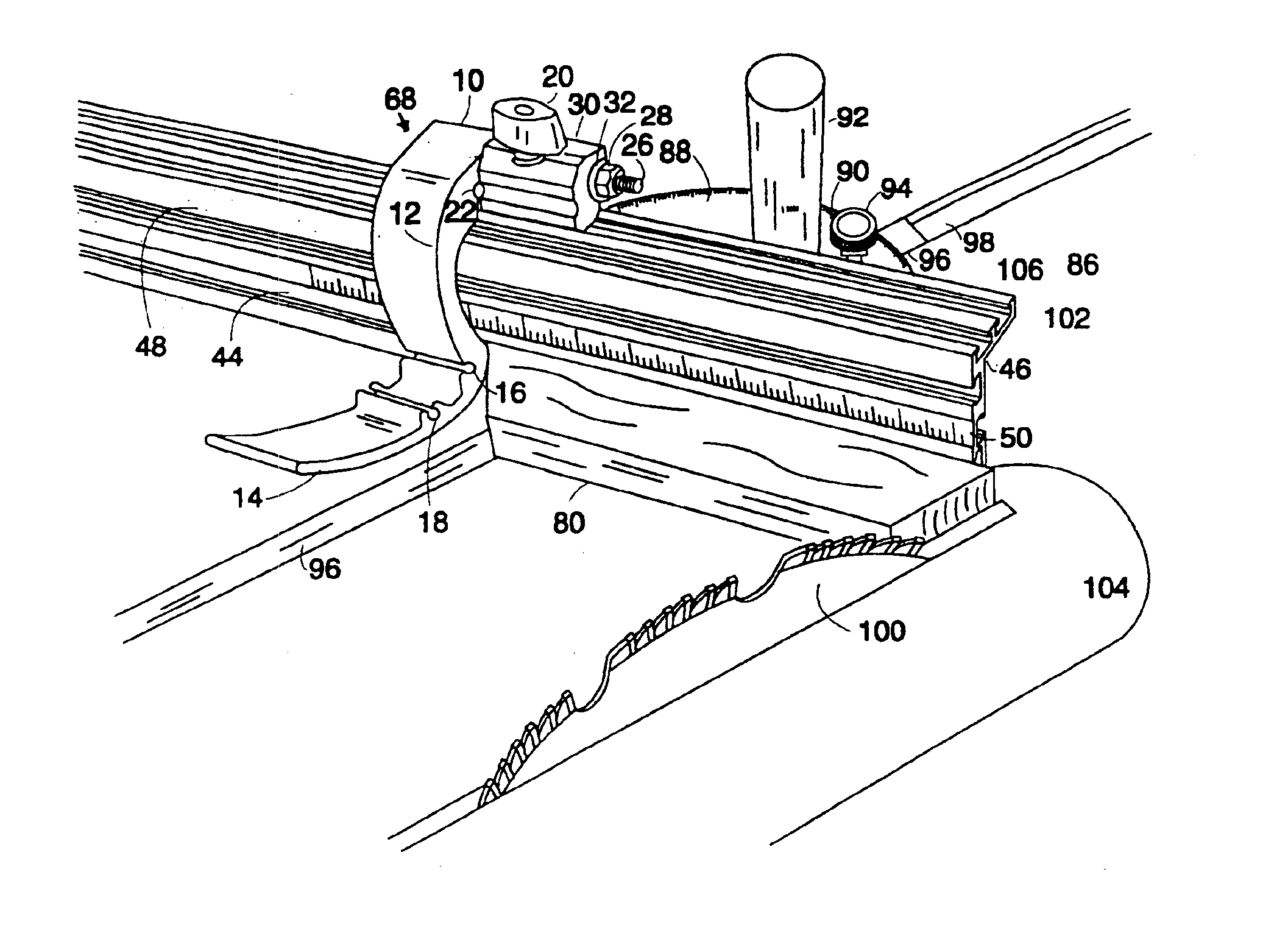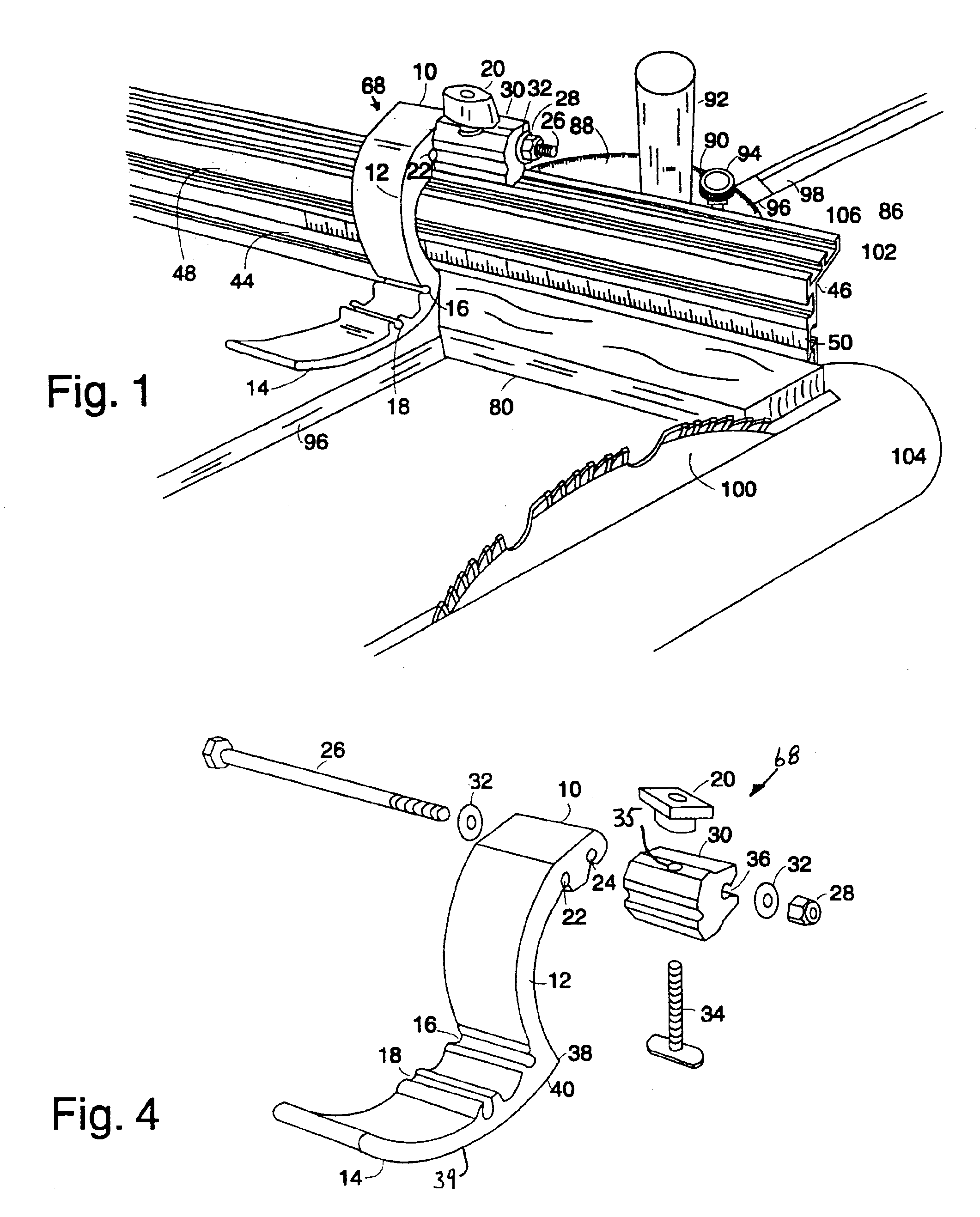Woodworking machinery jig and fixture system
a technology of fixture system and woodworking machinery, which is applied in the field of shop-made jigs and fixtures, can solve the problems of compromising the fit of the stop in the t-slot of typical jigs, affecting the fit of the stop, and not being able to lock securely
- Summary
- Abstract
- Description
- Claims
- Application Information
AI Technical Summary
Benefits of technology
Problems solved by technology
Method used
Image
Examples
Embodiment Construction
[0044]FIG. 1 illustrates a curved flip stop assembly of the invention 68 mounted to the fence track 46, which is one type of woodworking support, and miter guide 88 of U.S. Pat. No. 5,768,966. A miter gauge 88 which is attached to a miter gauge bar 96 fits into the table saw miter slot 98 and is used to control the workpiece as it is moved past the saw blade 100. A flip stop assembly 68 is shown on the L shaped track 46 which includes a curved L shaped flip stop arm 10 which is attached to a base 30 by a ¼″ bolt 26 and a lock nut 28. The flip stop assembly 68 is used to crosscut boards to length by measuring the distance between the end of the board 80 and the saw blade 100. The end of the board is pressed against the stop arm 10 while the other end is cut with the blade 100. When the flip stop assembly 68 is not in use the flip stop arm 10 is flipped out of the way. The flip stop assembly 68 is slideable along the length of a track by loosening knob 20 to loosen the head of the bol...
PUM
| Property | Measurement | Unit |
|---|---|---|
| Angle | aaaaa | aaaaa |
| Width | aaaaa | aaaaa |
Abstract
Description
Claims
Application Information
 Login to View More
Login to View More - R&D
- Intellectual Property
- Life Sciences
- Materials
- Tech Scout
- Unparalleled Data Quality
- Higher Quality Content
- 60% Fewer Hallucinations
Browse by: Latest US Patents, China's latest patents, Technical Efficacy Thesaurus, Application Domain, Technology Topic, Popular Technical Reports.
© 2025 PatSnap. All rights reserved.Legal|Privacy policy|Modern Slavery Act Transparency Statement|Sitemap|About US| Contact US: help@patsnap.com



